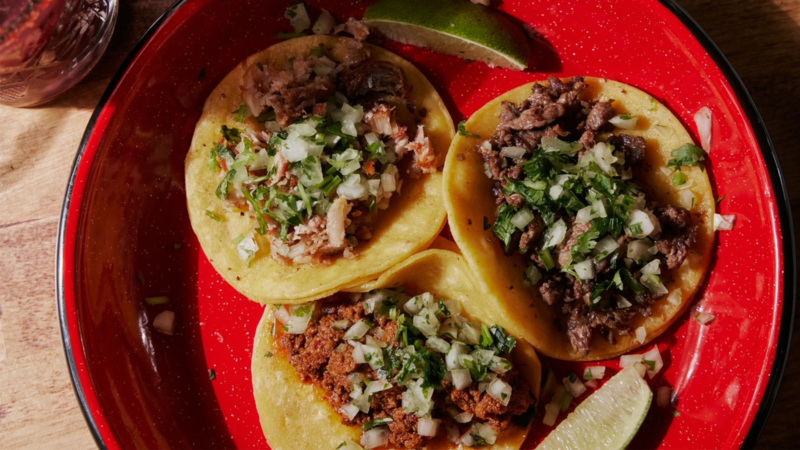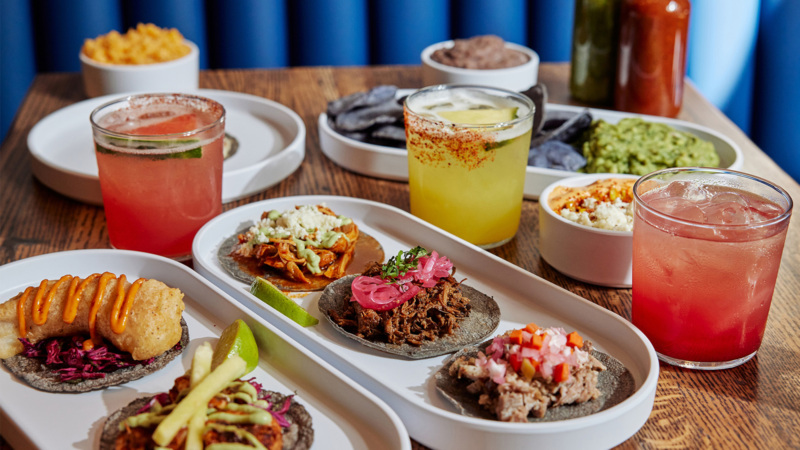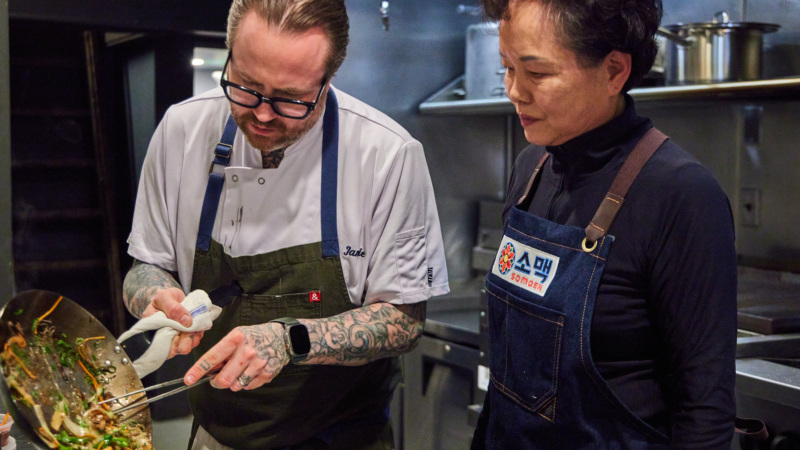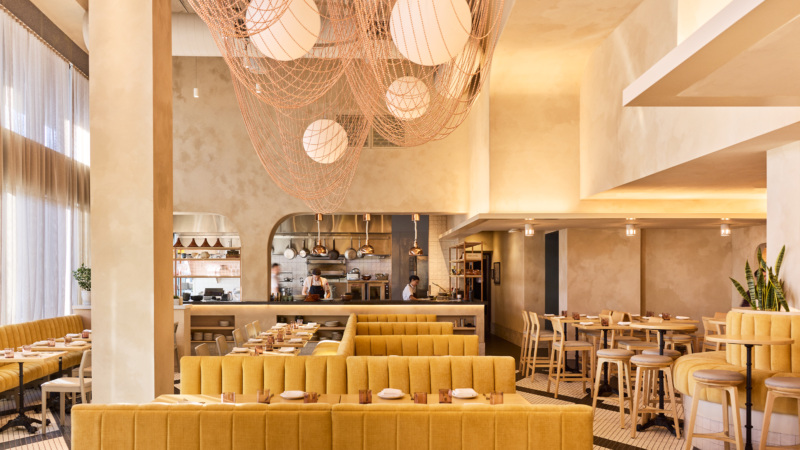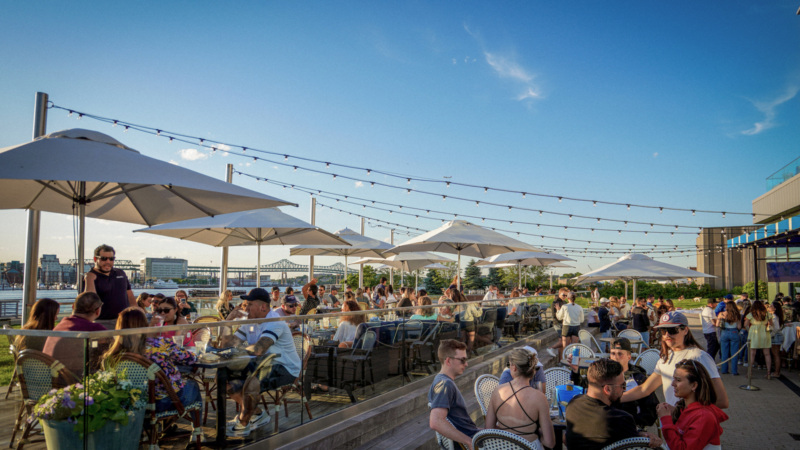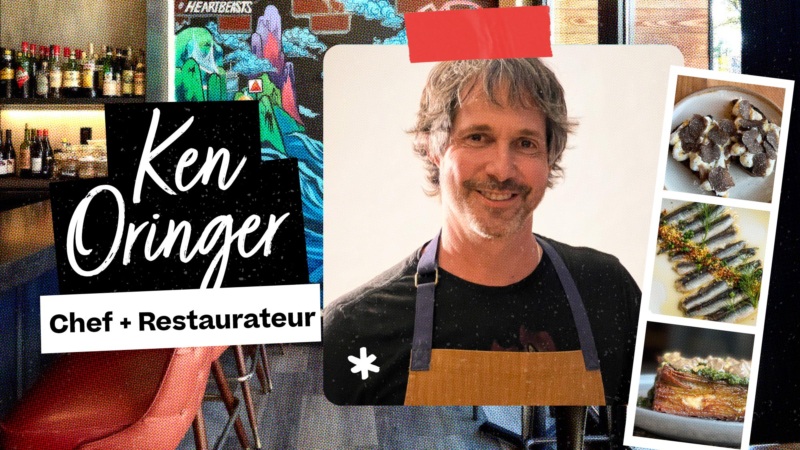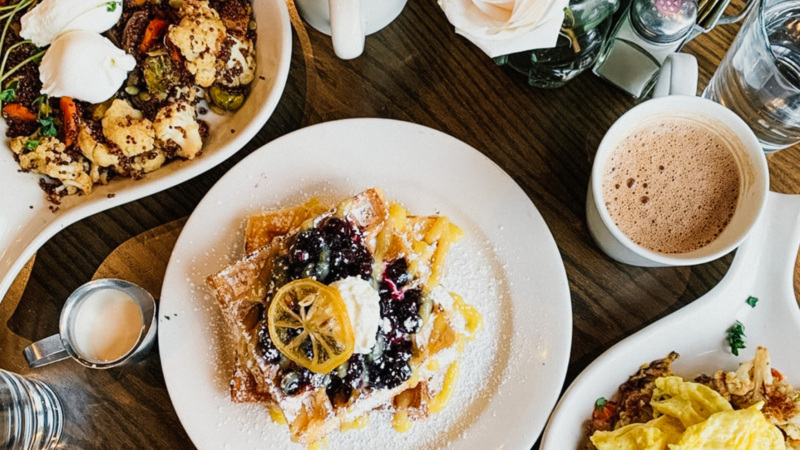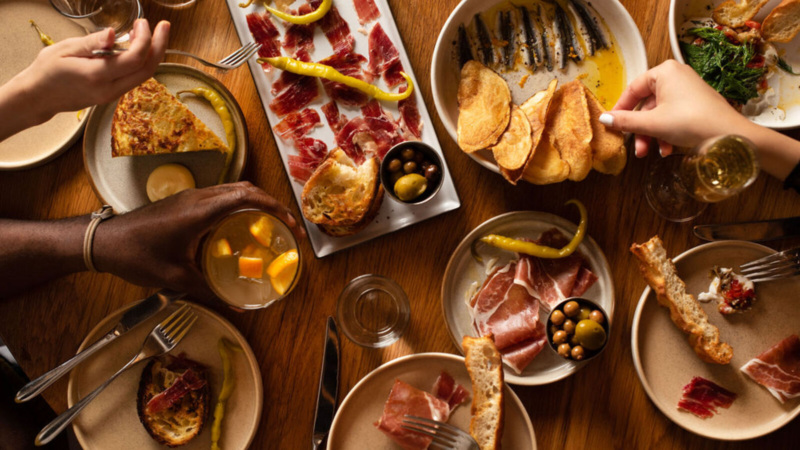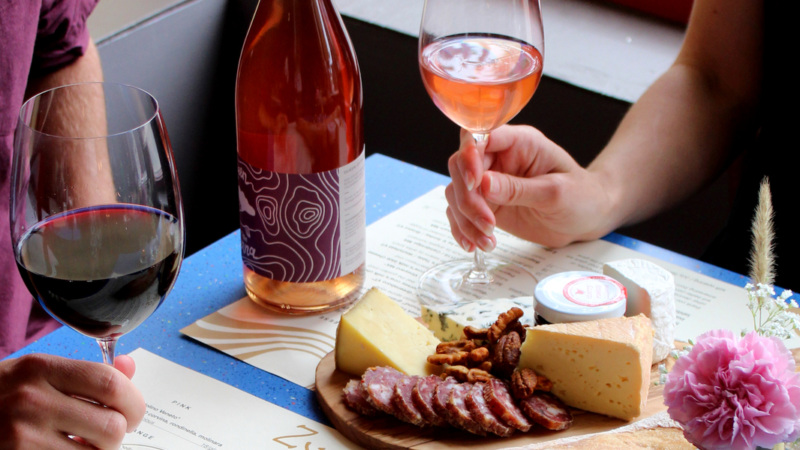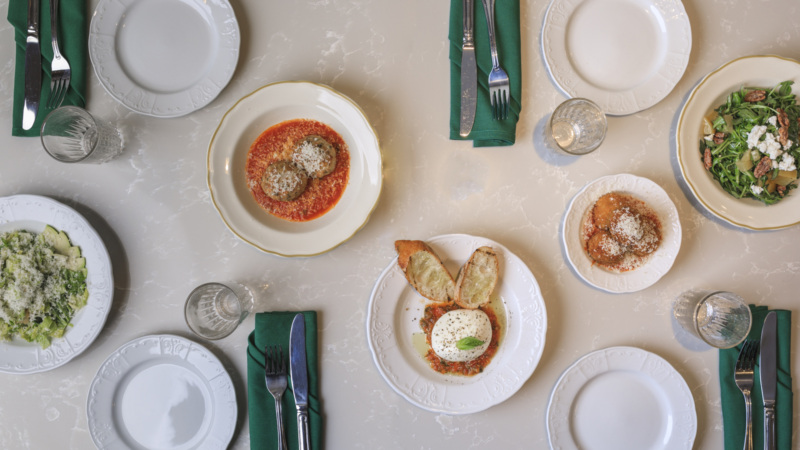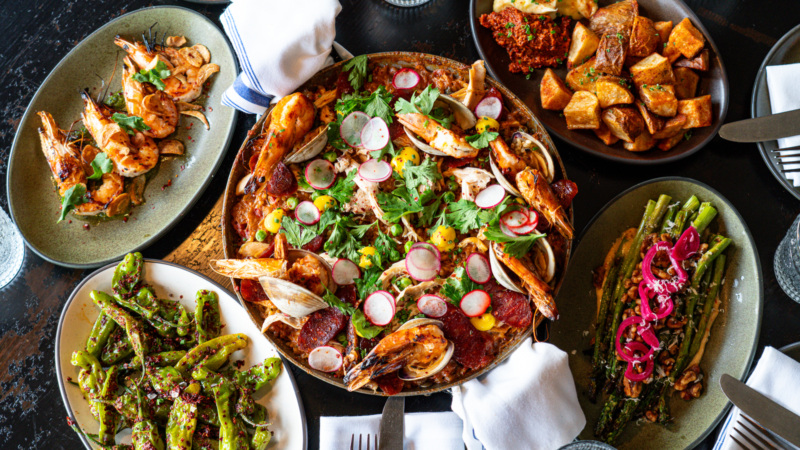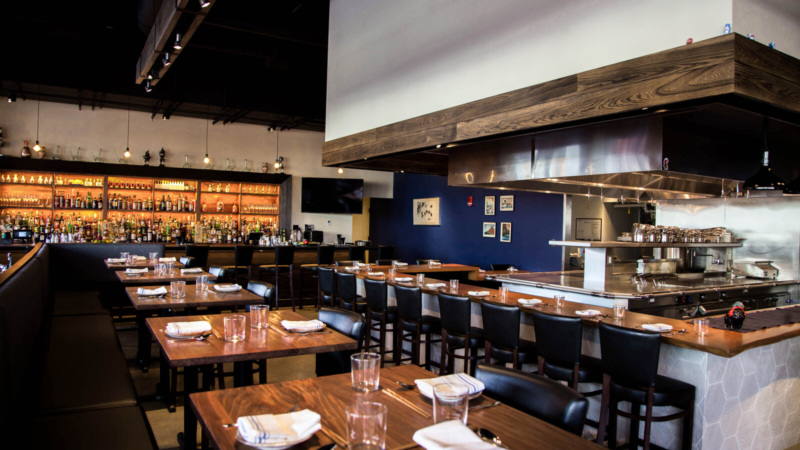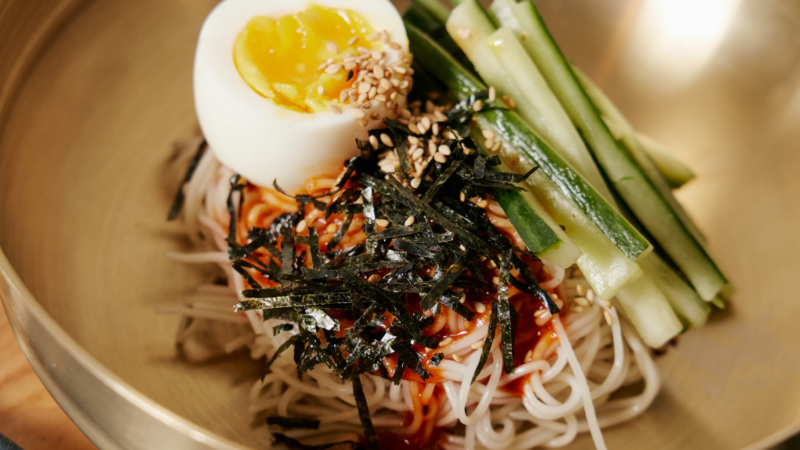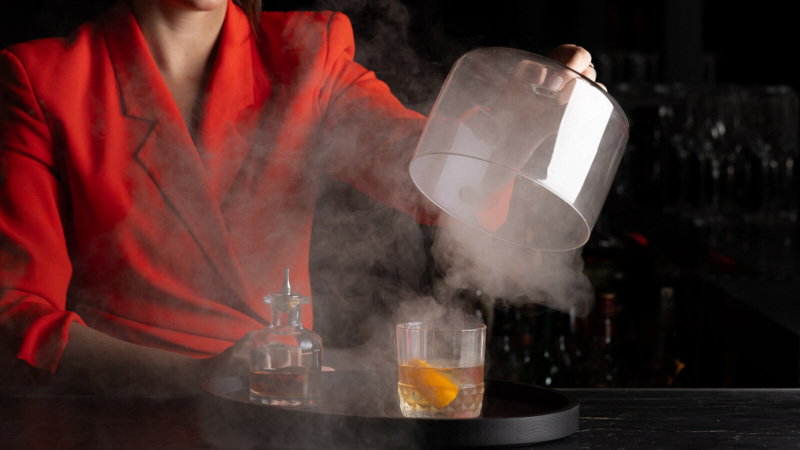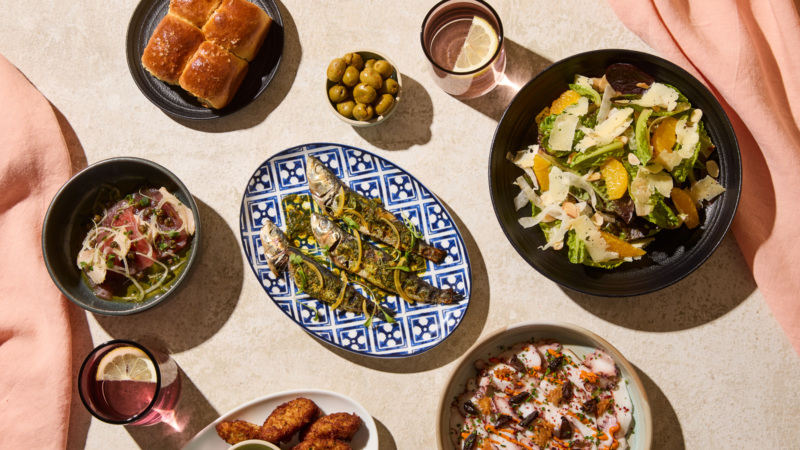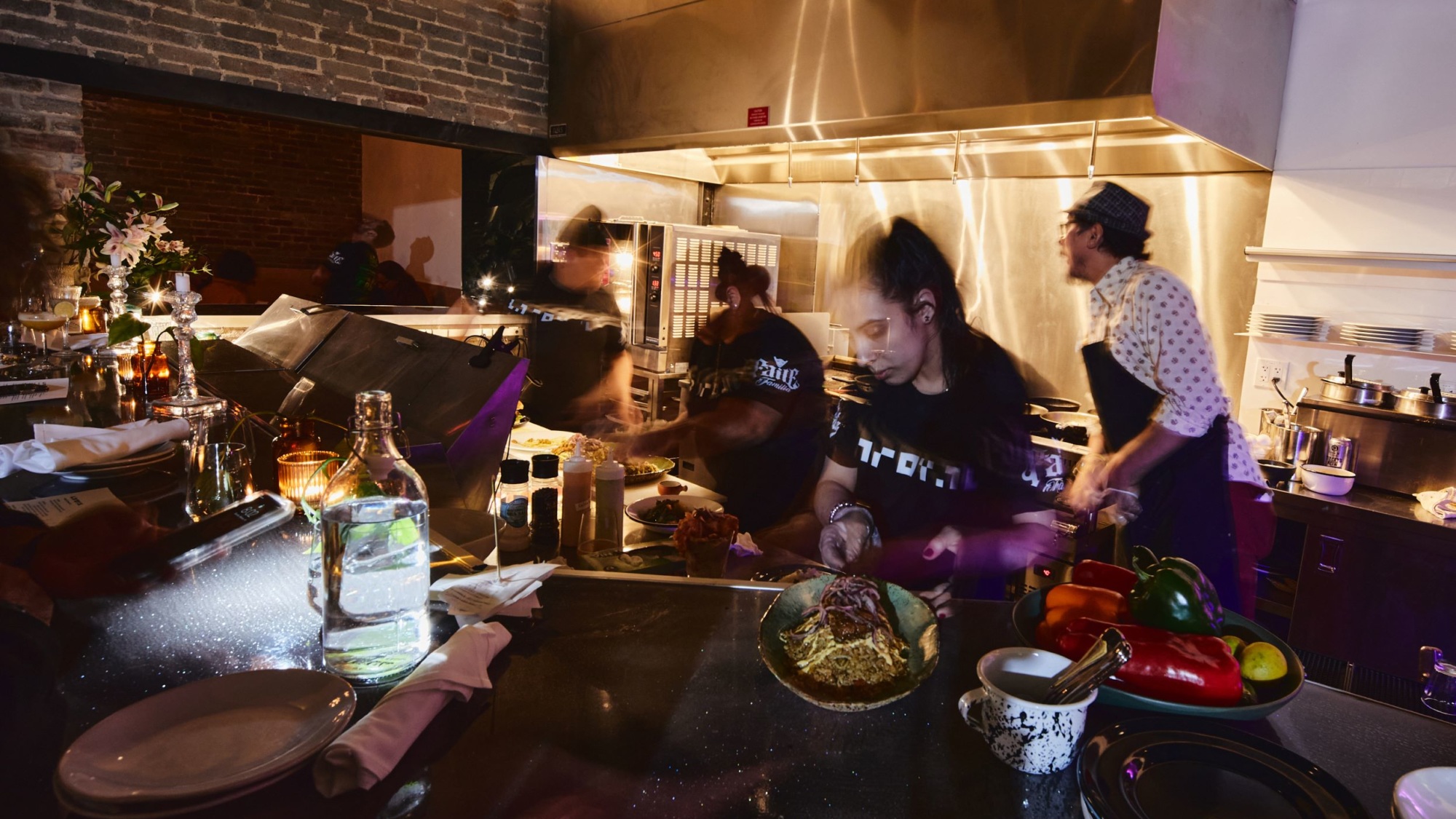
Everything You Need to Know About La Royal, Cambridge’s Peruvian Hot Spot
Before you go to a restaurant, what do you want — or need — to know most? In our series, The Rundown, we’re sharing all the essentials about newly opened (as well as favorite) Resy restaurants.
This time, we’re in Cambridge at La Royal, the new Peruvian restaurant from Maria Rondeau and JuanMa Calderón. They are also the energetic owners of acclaimed Peruvian eatery Celeste, open since 2018 in Somerville’s Union Square. Last summer, the couple launched Esmeralda, a dining venue in southern Vermont specializing in a traditional style of fire-pit cooking called pachamanca. With such a full plate, you might wonder how they decided to open another restaurant. It turns out that La Royal, which debuted in February, began with an irresistible opportunity.
1. When the perfect space landed in their laps, they couldn’t say no.
“Do you see the street right there, called Royal Avenue?” Rondeau asks, inviting a visitor to peer out the restaurant’s windows and look down the block. “That is the street where we started.” She’s referring to the supper club-style parties she and Calderón held at their home prior to launching Celeste (pronounced as it is in Spanish, “Ce-LES-stay”).
In the early months of 2021, they weren’t looking to take on any new projects. But when a property developer friend invited them to look at a space in their Cambridge neighborhood, they were smitten. The hundred-year-old brick building, with prismatic transom windows, fired their imagination. They could do so much with the expansive, light-filled space. And establishing a restaurant in their own neighborhood — the community they have called home for the last 10 years — felt irresistible.
“So even though it was during the pandemic, and even though it was crazy, and we had Vermont going, we couldn’t let it go,” Rondeau explains. Plus, their relationship with the owner and the contractor felt solid. “All the energy was right, all the intentions were right,” Rondeau marvels. “Although we never imagined opening another restaurant, it just suddenly made sense.”
Calderón concurs. The saying, “I can resist anything except temptation,” attributed to Oscar Wilde, is one of his favorite quotes. “I like that one,” he says. “It gives you the option to do everything.”
2. They (more than) get by with a little help from their artist friends.
Before they launched second careers as restaurateurs, Rondeau worked as an architect, and Calderón, as a filmmaker. So it’s not surprising that their lives are full of creative types. Some of those friends have created art installations in the new space. Look closer, for example, at the shadow cast by the fronds of a Xanadu philodendron, spilling out from a planter suspended above the bar. It’s not a shadow at all, but a drawing done by artist Daniela Rivera. That subtle image, etched onto the wall with a copper stylus, is steadily oxidizing, taking on a greenish hue.
Rondeau is fascinated by the ever-evolving nature of things — not just art installations like Rivera’s, but the life of a restaurant. “Every day, there’s a new way of occupying the space,” she says. “There’s a new energy: the mood, the light, the people, the temperature — they’re all transformed by the smells, the sounds …” As if on cue, we hear a sizzle, then smell the delectable scent of garlic, wafting out of the nearby kitchen.
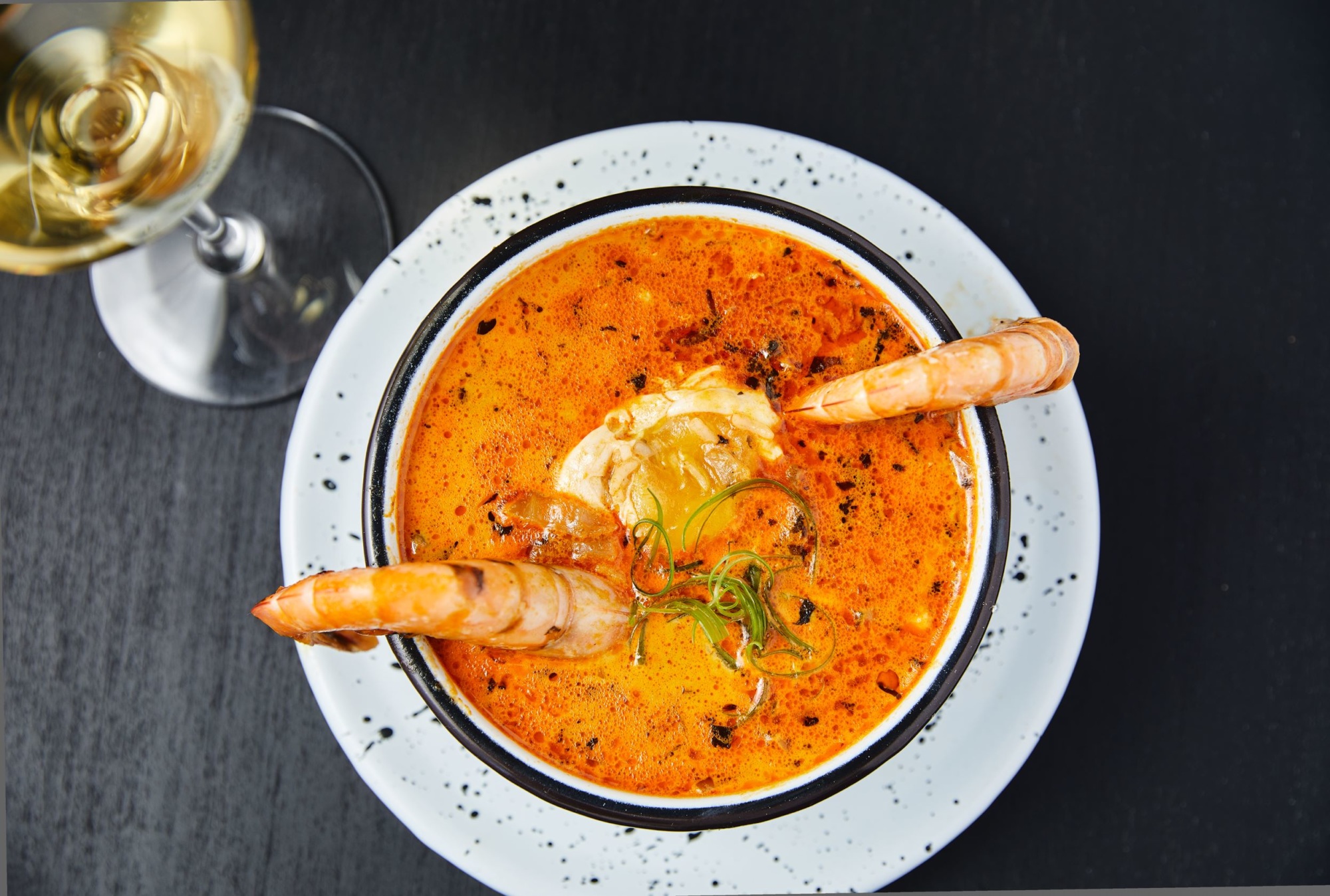
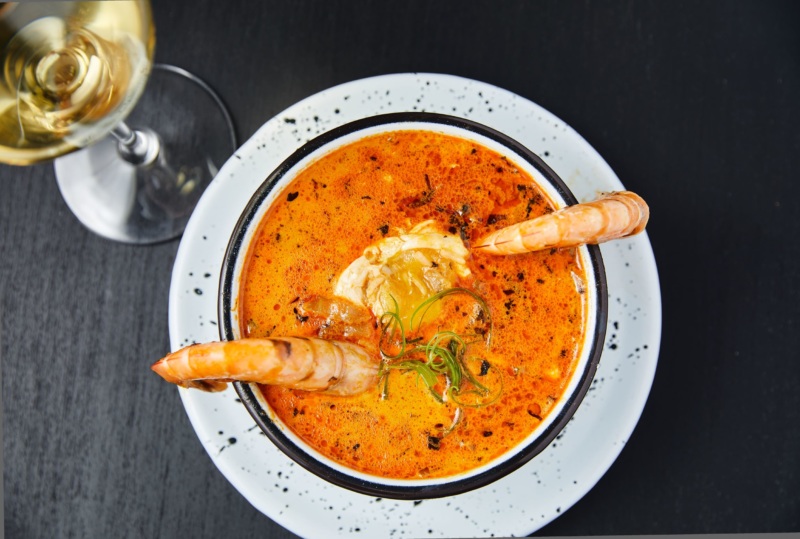
3. The ambitious menu is made possible by a tricked-out kitchen and a spirit of exploration.
While it’s natural to compare what you’re eating at La Royal with the menu offerings at Celeste, Calderón hopes you’ll approach his newest slate of Peruvian fare on its own terms. After all, he now has a fryer, an oven, and a grill — three pieces of equipment that Celeste’s tiny kitchen never had. Those appliances — together with staff members who trained at Celeste — make it possible to make a whole new repertoire of dishes. For example, the chef can now accommodate guests who want something fried alongside the stir-fried sirloin, called lomo saltado. Crisp batons of fried yuca, a starchy tuber, accompany that dish as well as several others, including Jalea La Royal, a platter of deep-fried cod, mussels, shrimp, and squid, topped with a juicy relish of tomatoes and onions; and cau cau, a rich, vegetable-heavy stew made with porcini mushrooms, potatoes, fresh mint, and large kernels of choclo corn. One version features steamed mussels; another is made entirely vegan.
The chef is intent on exploring all points of the compass when it comes to Peru’s regional cuisines. In addition to Lima-based recipes inspired by his mother’s home-cooking — such as chilled mashed potato terrines called causas, and renditions of ceviche — he’s making dishes like chupe de langostino, a crimson-hued bisque full of lima beans and rice. The prawn and egg-topped soup is a specialty of Arequipa, in the country’s south.
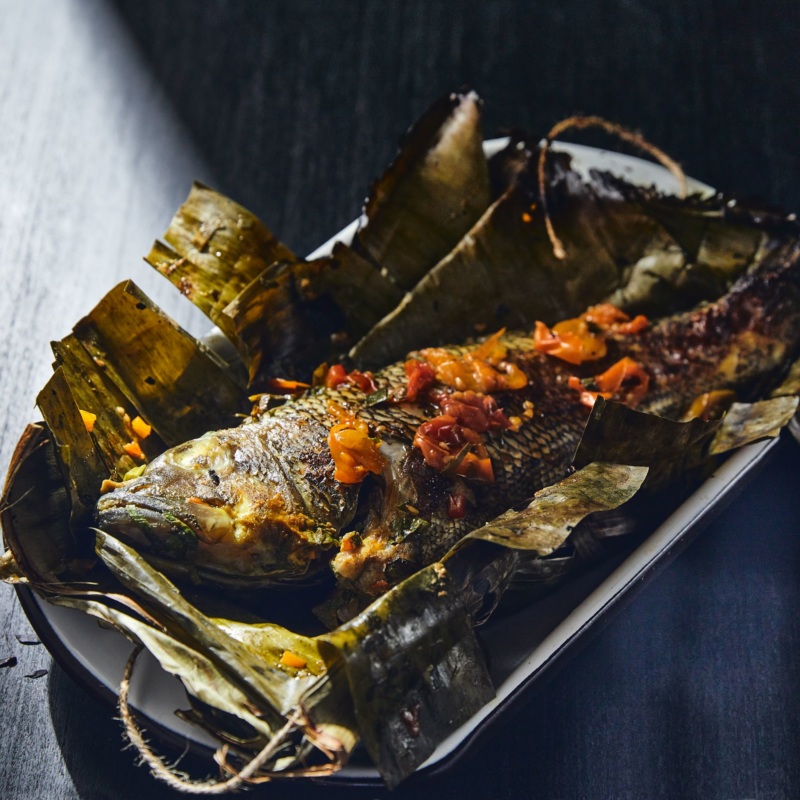

4. Don’t miss a dish that tastes like a trip down the Amazon River.
Patarashca — a spice-rubbed fish, wrapped in plantain leaves then grilled — is the most visually stunning of the chef’s foray into wilder territory. The dish is inspired by Peru’s lowland jungles, part of the Amazon River basin in the east. Calderón describes how women vendors there set up carts near the river, frying fish. His version arrives to the table as a steaming, charcoal-kissed packet, snipped of its twine to reveal a whole branzino. The fish is rubbed with a flavorful paste called mishquina, a blend of roasted garlic, cumin, turmeric, coriander, and a generous splash of achiote oil. Calderón calls it “the flavor of the Amazon.”
Rondeau says that after several rounds of experimentation, they chose branzino for its consistent size and ability to absorb the robust spice paste. “And it doesn’t have tiny bones,” she adds. “They kind of just pull off like a zipper, and it’s like, ‘rrrruppp!’ It’s very satisfying.”
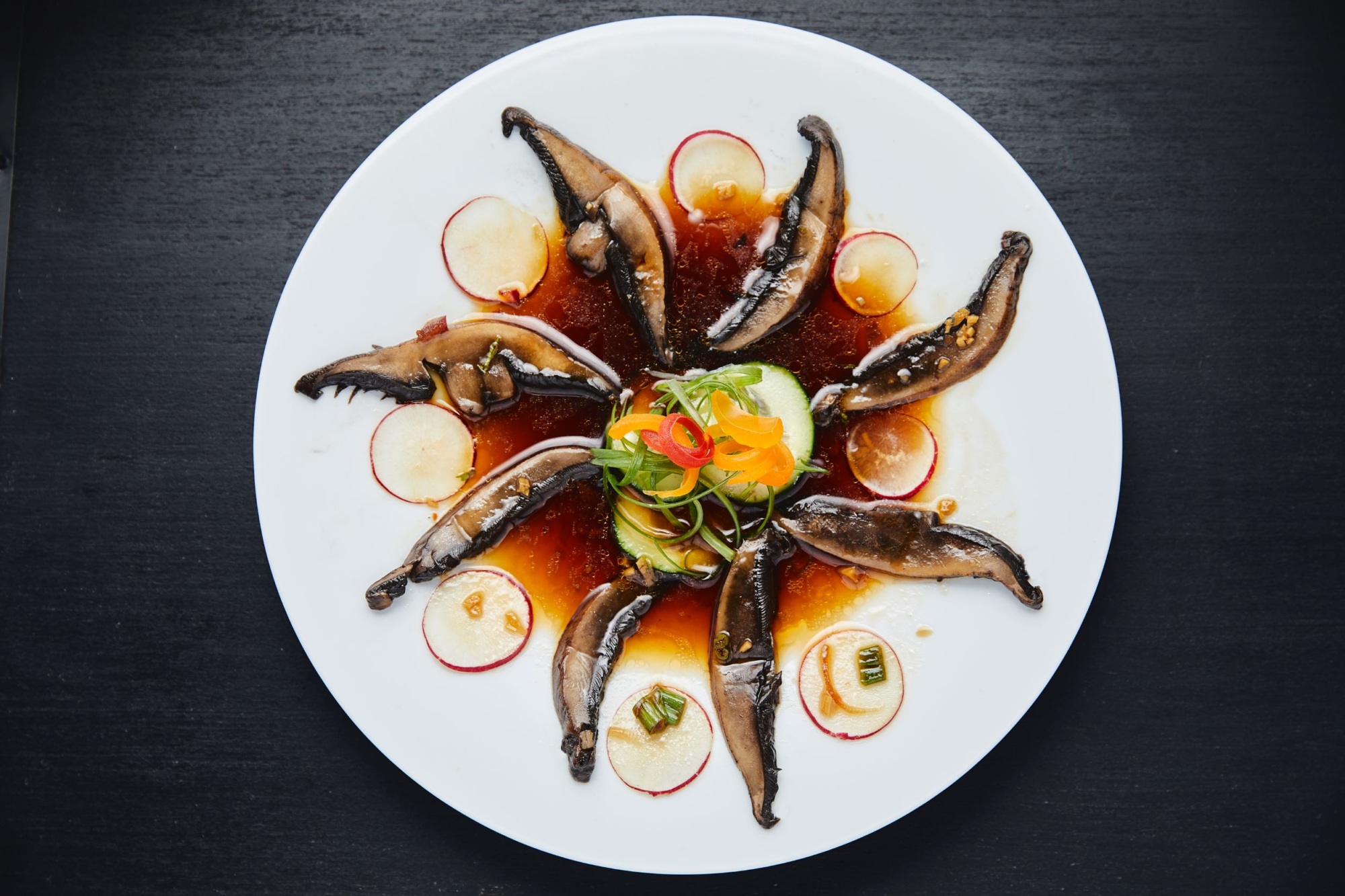
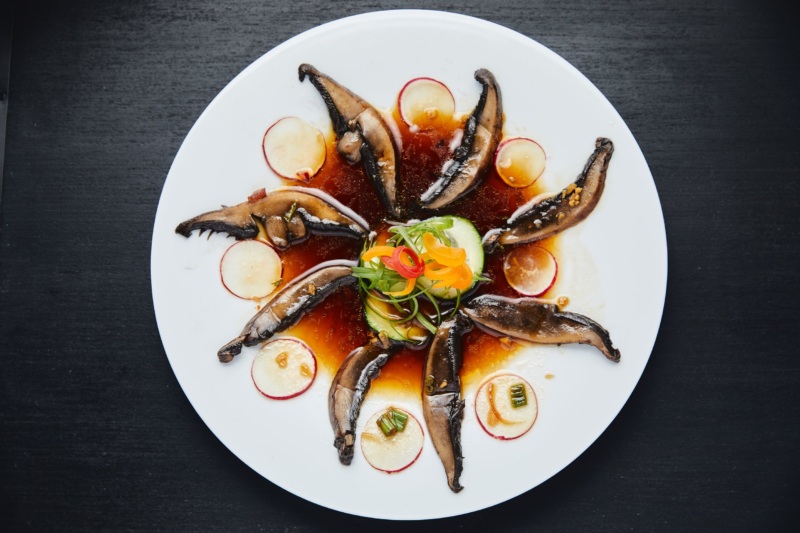
5. Tuck into dishes that pay tribute to the chef’s Chinese ancestry.
Several of La Royal’s dishes showcase East Asian flavors. Tiradito de hongos, for example, features sashimi-like slivers of portobello mushroom, doused with a gingery soy dressing. The appetizer is inspired by Nikkei (Japanese-Peruvian) cuisine.
Chifa, Chinese-Peruvian fare, is absolutely essential to this menu. Calderón’s great-grandfather was the son of an immigrant from Guangzhou (formerly Canton) who traveled to Peru in the mid-1800s to work on a hacienda. So when you eat pescado con verduras, steamed blue cod and vegetables, you’re honoring a branch of the chef’s family tree. Calderón makes the dish’s key seasoning, XO sauce, from scratch. That sauce was the first thing he made when he fired up the restaurant’s new stove.
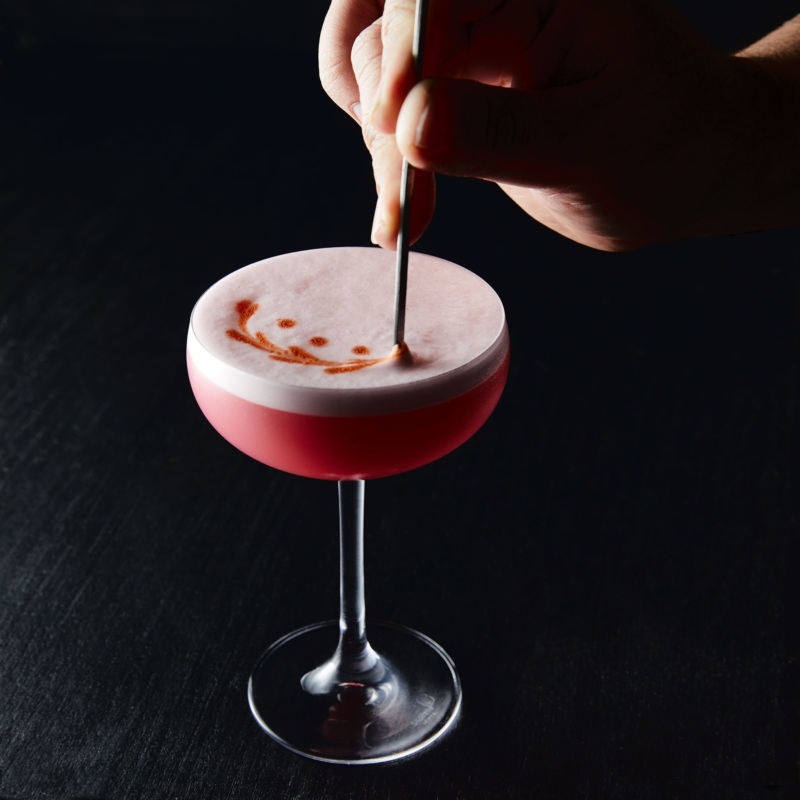

6. A New England food scholar lends her expertise to the cocktail program.
Artists are not the only creatives with whom the restaurateurs collaborate. Food scholar and cookbook author Darra Goldstein lends her expertise to the cocktail program. The professor emeritus of Williams College met Rondeau and Calderón last summer at Esmeralda. Soon after, she developed a line of macerated piscos specifically for the restaurant. Today, La Royal’s cocktail director, Joselin Saravia, uses a scaled-up version of Goldstein’s horseradish tincture to make a Pisco Martini, and an elixir of hibiscus, pomegranate, and allspice for a cocktail called La Royal Sour. “I love hibiscus because it reminds me of Guatemala,” Rondeau says, calling the fuchsia-hued version of a pisco sour an homage to her native country.
7. You’ll return again and again — as much for the hospitality as for the food.
On a warm weekend night, La Royal is bustling. Guests occupy all of the banquette seating, while patrons perch at the gleaming bar, watching everything happening in the open kitchen. A side nook of the dining room is also full. And just like at Celeste, an ebullient soundtrack of salsa and cumbia sets the mood.
“Everybody here knows — all of the servers know — that it’s about being themselves,” says Rondeau. “We tell them to try all of the dishes — and when people ask, ‘What’s your favorite?’ be totally sincere why you love it. Use your own words, give it your own sense, and treat everyone with as much love as possible. Even the difficult ones — give them more love! Wherever they are, they’ll be brought to another level, where they can forget everything else, and be here, in the moment.”











